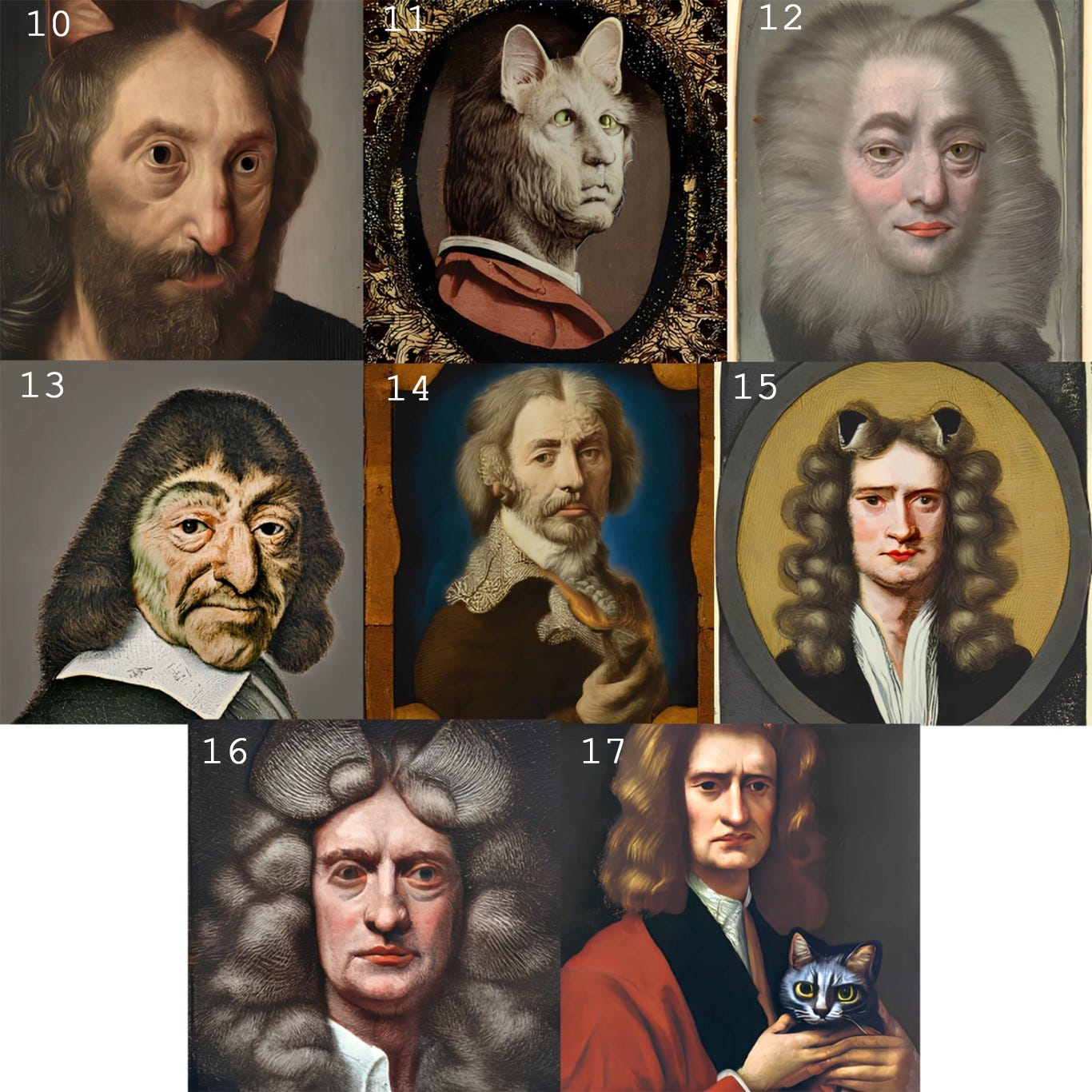Cats in the Era of Great Division
Fifth batch of findings from Alternative Dramatic History of Cats (ADHoC)
This is an ongoing series of my discoveries from the archive of the mysterious Arty Inty, containing numerous documents, drawings, and photos related to the monumental impact of cats on our civilization, introduced here. These documents will be published in portions. The content will vary between collections of drawings, short historical stories, and other anecdotal evidence of cats’ and humans’ interactions dating back to prehistoric times.
Last time we briefly discussed the underground societies cats formed to preserve their traditions in the Medieval period. Today’s brief account is about a fundamental split that emerged among felines in the eighteenth century and its long-term consequences.
That century marked the beginning of a new era in the Alternative Dramatic History of Cats: the Era of Great Division. Two distinct cat “personalities” emerged:
The more privileged cats were very close to aristocrats: playful, and often friendly, but restricted in their freedom to maintain mental acuity and general knowledge. The relationship between these pleasant-mannered, well-fed cats and humans continued to evolve, with many humans depicted in oil paintings with their lovely pets: a tradition meant to signal humans’ wisdom and higher societal rank (Fig. 1 and 2). Some cats were considered almost saint-like (Fig. 3 and 4), obliged to pray for the well-being of their “masters”. This tradition led to further restrictions on cats’ intellectual diets and the degradation of their free philosophical nature.
On the other hand, the less privileged underground cats suffered materially yet were determined to continue growing intellectually. This second trait – sharp minds, strong memory, and affection – allowed the cats to develop and share knowledge with humans via Logos. Cats helped humans in many areas. Some people benefiting from such coexistence were talented artisans and craftsmen who developed new stained-glass construction techniques (Fig. 5-7).
Many artists and writers benefited from cats’ influence. One peculiar form of exhibiting an appreciation for cats was to paint a portrait with just a few feline features, such as one feline ear in Fig. 8 and 9. Why did they paint just one feature?
There are two hypotheses. First, such paintings were unusual for the time, and artists were afraid they’d break unspoken “social norms” if they were to introduce a complete set of feline features into a portrait. Second, many beneficiaries in cat-human interactions wanted to piggyback off cats’ intellectual achievements and take credit for their sound advice.
By showing one feline ear instead of two, a couple of whiskers instead of many, etc., humans would feel less guilty about appropriating too much from the cats.
With time, more and more scientists and philosophers found solace in interacting with the underground cats (Fig. 10-18). We won’t attempt to list all these cases here: they are too many and, probably, too shocking. To hint at the scope of these interactions during the Great Division era, it is enough to drop two early names, Rousseau and Newton:
Next time we will explore the Great Escape of cats to the cosmos. Stay tuned!



